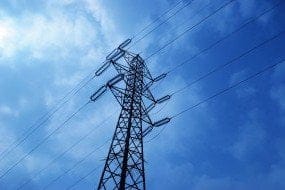Differential Time-Based Electricity Tariffs
The Union Power Ministry in India has recently announced proposed changes that could revolutionize the electricity tariff system. These changes involve the implementation of differential time-based electricity tariffs, which aim to optimize energy consumption and integrate renewable energy sources.
Understanding the Two Types of Time-Based Tariffs
The time-based power tariff structures mentioned in the announcement can be categorized into two types: static and dynamic. Static tariffs are predetermined tariffs based on specific time blocks, while dynamic tariffs are determined in real-time according to the actual demand conditions. The focus of the proposed changes is on static tariffs, which will be decided in advance for different blocks of the day.
Discounted Tariffs During Solar Hours
Under the Time-of-Day (ToD) tariff system, the power tariff during “solar hours” will be at least 20% lower than the normal tariff. The duration of solar hours will be specified by the respective State Electricity Regulatory Commission (SERC). This initiative aims to encourage consumers to consume electricity during daylight hours when solar power generation is at its peak. By providing discounted tariffs during solar hours, consumers are incentivized to shift their energy consumption to these periods.
Peak Hour Surcharge for Commercial and Industrial Consumers
For commercial and industrial consumers, the tariff during peak hours will experience a minimum increase of 20% compared to the regular tariff. This surge pricing during peak consumption aims to discourage excessive load on the grid during high-demand periods. By imposing higher tariffs, consumers are encouraged to reduce their electricity consumption or shift it to non-peak hours, leading to more efficient grid management.
Timeline and Smart Meters
The ToD tariff system will be applicable for commercial and industrial consumers with a maximum demand of 10 KW and above from 1st April 2024. For all other consumers, except agricultural consumers, it will be effective from 1st April 2025. However, the implementation of the ToD tariff system is contingent upon the installation of smart meters. Smart meters enable accurate measurement and monitoring of electricity consumption, making them a prerequisite for the ToD tariff system.
Global Adoption and Challenges in Renewable Integration
Time-based power tariff structures have been implemented in approximately 20 countries, encompassing some 17 European nations as well as the United States. The objective is to balance electricity demand and supply efficiently while promoting the integration of renewable energy sources.
One of the major challenges in integrating renewable energy generation is the variability in generation trends. Solar and wind power are dependent on weather conditions and may not align with the demand cycle. To address this issue, alternative technologies such as hydrogen and hybrid generation models blended with off-stream pumped storage are being considered for energy storage. These storage solutions help balance the intermittent nature of renewable energy generation, ensuring a reliable and sustainable electricity supply.
Month: Current Affairs - June, 2023
Category: India Nation & States Current Affairs


